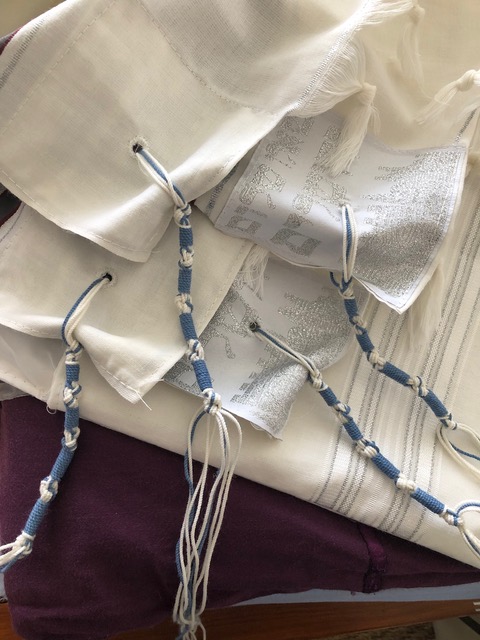I'm not a rabbi, but the mitzvah of tzitzit is very important to me, and I have gone through the halachot of tzitzit at least three or four times. In the Shulchan Aruch you will find that one of the halachot discusses a matter referred to as notef al hakeren. That means the tzitzit should be tied in such a way that when worn, they hang down along the side of the tallit and touch the corner (i.e. the tip).
On the other hand, there is another halacha that requires that the hole for the tzitzit is not too close and not too far from the edge of the tallit. If it's 2 cm away, it's not kosher; if it's 8 cm away, it's not kosher. Ideally it should be around 5 cm from the edge.
Combining the two halachot is a bit of a problem. There are three solutions:
1) Tie the first knot in such a way that the tallit fabric is not bunched up or reduced in any way. Many Sephardic halachic authorities follow this ruling. It means you have no problem with the distance of the tzitzit hole, but you do have a problem with notef al hakeren, because it's very likely the tzitzit will drift at some point around the corner and over to the wrong edge of the tallit. Manufacturers often follow this approach when they tie on inexpensive machine-spun tzitzit, for those customers who do not demand high standards when it comes to the tzitzit.
2) Tie the first knot closer to the hole so that the tallit fabric bunches up a bit. This will insure that the tzitzit do not budge from the proper place, so you have solved the problem of notef al hakeren. According to some opinions, you have created a problem in terms of the positioning of the hole. Instead of taking into the account the distance based on the amount of fabric, they look at it as if that distance has now been reduced from 5 cm to 2 or 3 cm, and therefore the hole is now too close to the edge. The Chazon Ish and many other Ashkenazi poskim disagree, arguing that this is the ideal. In my humble opinion, if you bunch up the fabric slightly you've solved both problems: you still have 4 cm even according to the Sephardic approach, and the knot is tight enough to keep the tzitzit in place.
3) Lubavitch poskim often have innovative approaches to halacha, and one notable innovation is the way they solve this dilemma on a tallit gadol. So in the case of Chabad tzitzit, you add a second hole. Then you tie the tzitzit normally in the primary hole, not bunching up the fabric at all. After making the first knot, you take the shamash string and insert it into the second hole before proceeding to wind the string around. This essentially anchors the tzitzit in place.
Our policy is to tie tzitzit according to the first approach above, when a customer orders Sephardic tying, and according to the second approach when a customer orders Ashkenazi tying. We have written about all of the above in our blog ( here and here).

 United States Dollar
United States Dollar
 Shekel
Shekel
 Euro
Euro
 British Pound
British Pound
 Australian Dollar
Australian Dollar
 New Zealand Dollar
New Zealand Dollar
 Canadian Dollar
Canadian Dollar
